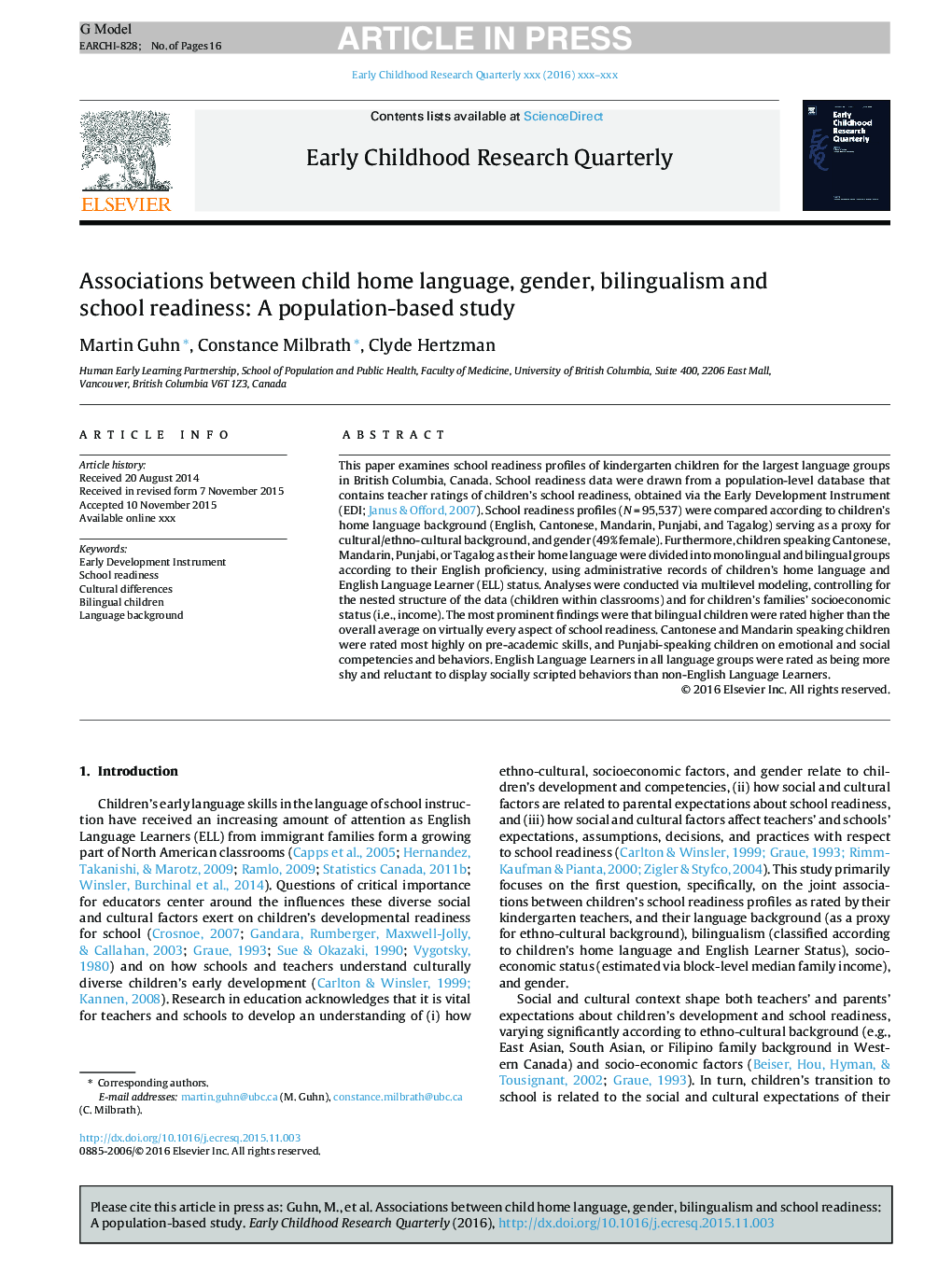| Article ID | Journal | Published Year | Pages | File Type |
|---|---|---|---|---|
| 6840735 | Early Childhood Research Quarterly | 2016 | 16 Pages |
Abstract
This paper examines school readiness profiles of kindergarten children for the largest language groups in British Columbia, Canada. School readiness data were drawn from a population-level database that contains teacher ratings of children's school readiness, obtained via the Early Development Instrument (EDI; Janus & Offord, 2007). School readiness profiles (NÂ =Â 95,537) were compared according to children's home language background (English, Cantonese, Mandarin, Punjabi, and Tagalog) serving as a proxy for cultural/ethno-cultural background, and gender (49% female). Furthermore, children speaking Cantonese, Mandarin, Punjabi, or Tagalog as their home language were divided into monolingual and bilingual groups according to their English proficiency, using administrative records of children's home language and English Language Learner (ELL) status. Analyses were conducted via multilevel modeling, controlling for the nested structure of the data (children within classrooms) and for children's families' socioeconomic status (i.e., income). The most prominent findings were that bilingual children were rated higher than the overall average on virtually every aspect of school readiness. Cantonese and Mandarin speaking children were rated most highly on pre-academic skills, and Punjabi-speaking children on emotional and social competencies and behaviors. English Language Learners in all language groups were rated as being more shy and reluctant to display socially scripted behaviors than non-English Language Learners.
Related Topics
Social Sciences and Humanities
Psychology
Applied Psychology
Authors
Martin Guhn, Constance Milbrath, Clyde Hertzman,
